The IET was formed from over 40 predecessor organisations, and their stories illustrate the different intentions of their respective founder members.
Some groups flourish briefly and then collapse, often for financial reasons (the cost of printing the Journal very nearly led to the collapse of the Society of Telegraph Engineers a few years after it was founded). Some are formed in opposition to existing organisations and are later amalgamated into them. Others are formed from existing social groups, or by those who are not eligible to join existing organisations. All these agreements, arguments and reconciliations between members are played out in the history of engineering organisations.
Professional specialisation: The IEE, IProdE and IERE
The foundation and membership of the Institution of Electrical Engineers (IEE), the Institution of Production Engineers (IProdE) and the Institution of Electronic and Radio Engineers (IERE) is a story of professional specialisation. Each organisation was founded by engineers who felt their professional needs were not met by other organisations they were eligible to join.
The IEE was founded as the Society of Telegraph Engineers by those working in the new technologies of electrical communications and (later in the century) power. These early members felt that the requirements of electrical engineering, especially the need for advanced knowledge of mathematics and physics, needed a new organisation. Relations with the other engineering institutions were good: the new Society was modelled after the Institution of Civil Engineers and its meetings were held in the ICE lecture theatre. This relationship could be fraught at times - when the IEE first submitted an application for a Royal Charter the ICE objected – but the two organisations worked together well.
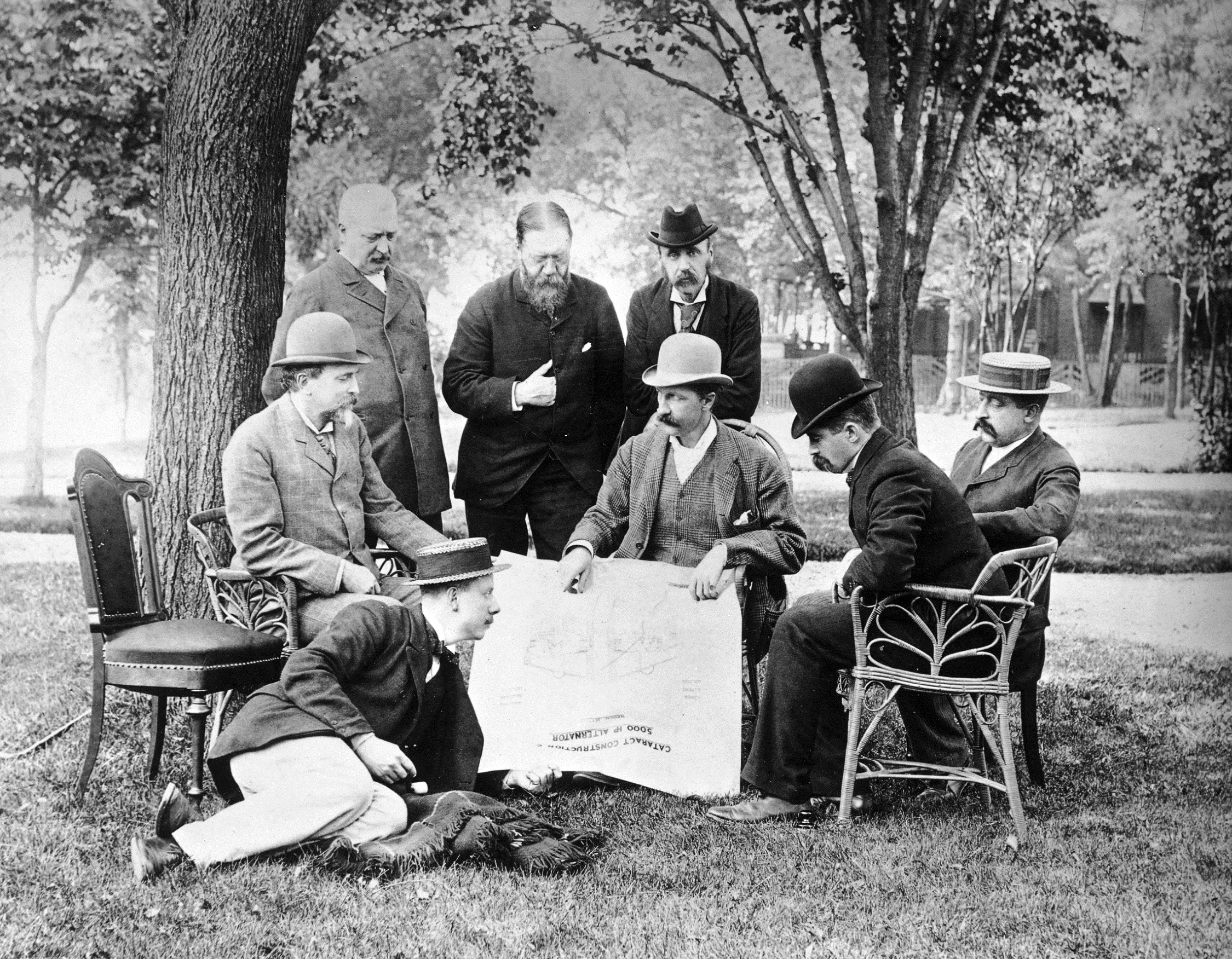
Sir William Henry Preece (standing, centre) with engineers discussing the Niagara Falls Power Scheme c 1895 ref. Image 1/1/0383.04
Sir William Preece was closely connected with the new organisation – as Engineer in Chief of the Post Office, he was keen to see specialist training and support for telegraph and telephone engineers.
He was President of the Society of Telegraph Engineers in 1880 and of the renamed Institution of Electrical Engineers in 1893. He was also a member of the Institution of Civil Engineers and was President of that institution in 1898.
The Institution of Production Engineers (later, and briefly, the Institution of Manufacturing Engineers) was founded in 1921.
Its membership worked in the growing field of factory production and, like the IEE before them, its members felt a separate organisation was required.
Unlike the IEE, the IProdE operated mainly through local sections, which ran their own programmes and elected their own officials.
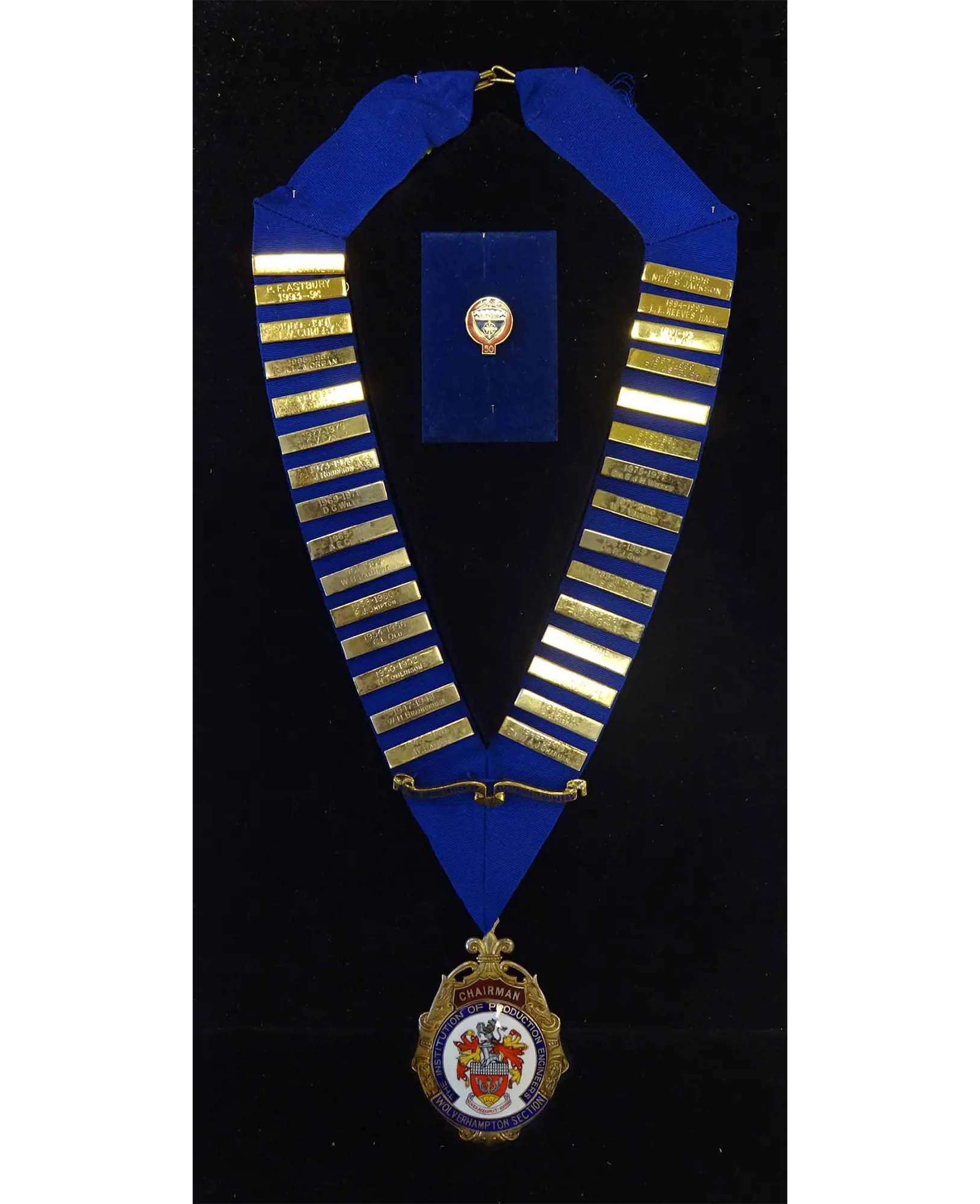
Chain of office, IProdE Wolverhampton Section ref. IMfgE 3/5/1/14
The Institution of Electronic and Radio Engineers was founded in 1925 as the Institute of Wireless Technology, later the British Institution of Radio Engineers (BritIRE).
This organisation was founded in the face of direct opposition from the IEE, which had established its own section for wireless engineering.
The IERE campaigned for a separate organisation for radio engineers, with a focus on the professional radio engineer rather than the amateur enthusiast.
The IERE strongly supported non-traditional routes into a professional career, recognising qualifications from outside the UK as well as those obtained by part-time study.
In 1947, one of the IERE’s Associate Members, Major-General Brahm Kapur, was the first to argue for formation of local sections in India, given the interest in radio engineering.
Major Kapur went on to be elected as the first Chairman of the Delhi Section in 1951.
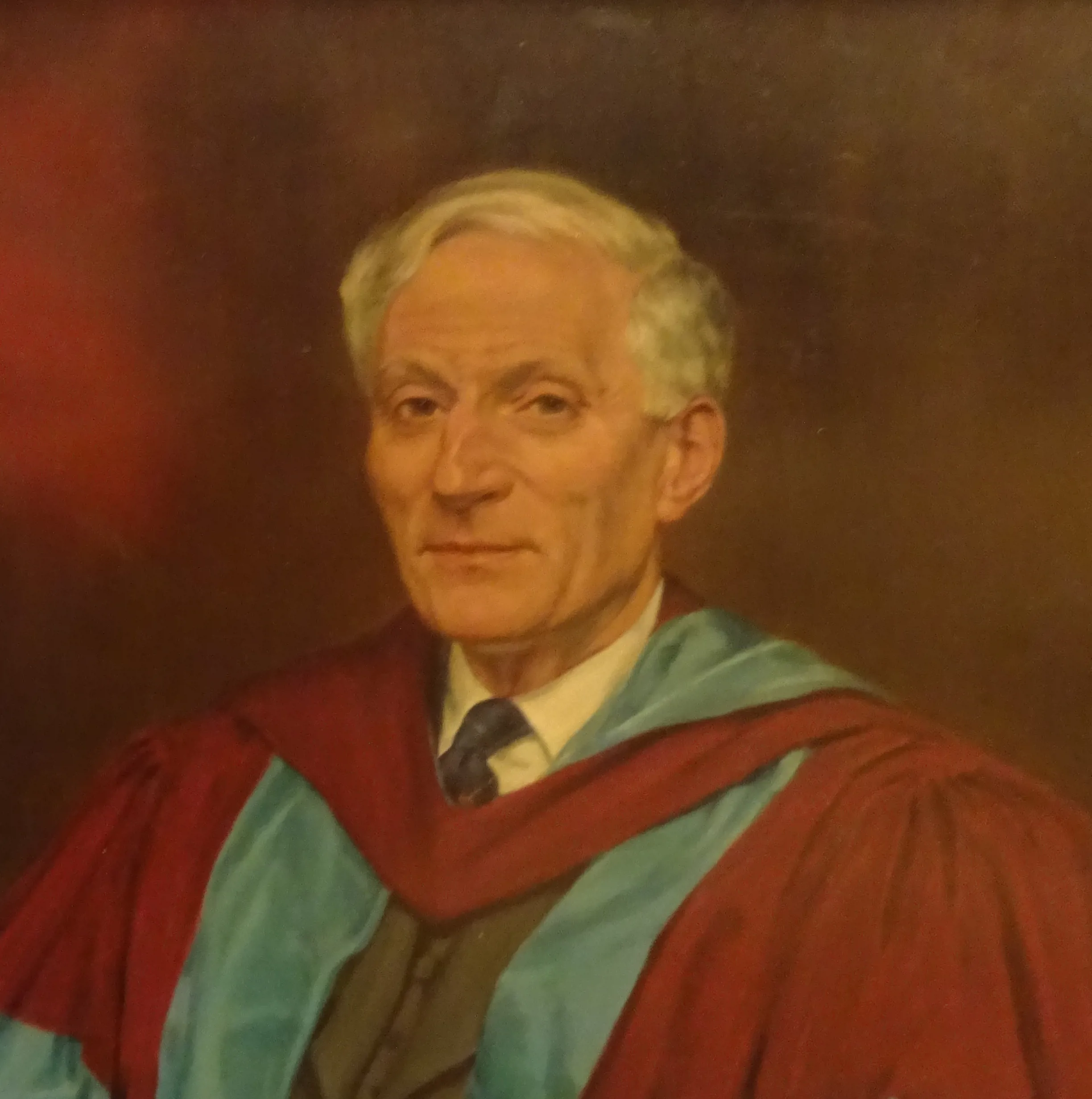
Portrait of Sir Eric Zepler, IERE President 1959 and founder of the Department of Electronics, Telecommunications and Radio Engineering at the University of Southampton ref. OPC/2/73
Social clubs and student societies
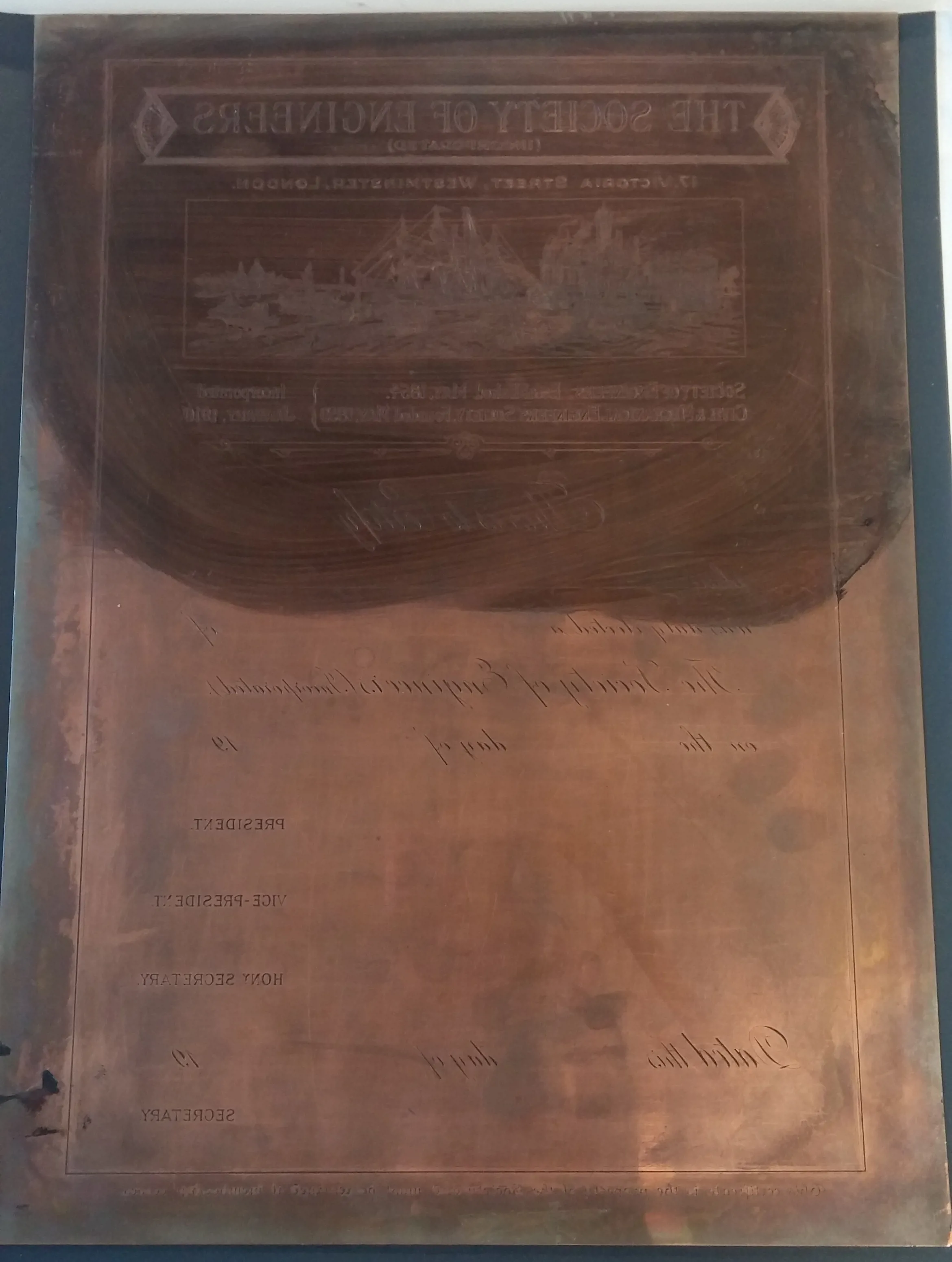
Engraved copperplate of Society of Engineers certificate ref. IET images IIE/SOE/OPC/3
The Society of Engineers (SOE) began as the Putney club in 1854, a social club for those who had studied civil engineering at Putney College.
In 1857, it changed its name to the Society of Engineers and by 1858 it had 100 members.
The Society was open to members working in all branches of engineering. It also attracted younger members, as students were not eligible to join the Institution of Civil Engineers (founded in 1818) until 1867.
The Civil and Mechanical Engineers Society was a similar group, established by pupils and draughtsmen working for Messrs Ravenhill & Company in Tower Hamlets.
The group was founded in 1859 and merged with the Young Engineers’ Scientific Association in 1861. The C&MES and SOE merged in 1910.
The Junior Institution of Engineers
The Junior Institution of Engineers was founded as the Vulcanic Society in 1884, changing its name to the Junior Institution of Engineers in 1902.
It was established by junior engineers with the aim of instructing and encouraging young engineers at the start of their professional careers.
In the 1960s it switched its focus to technician engineers and merged with the Institution of Incorporated Engineers (IIE) in 1998.
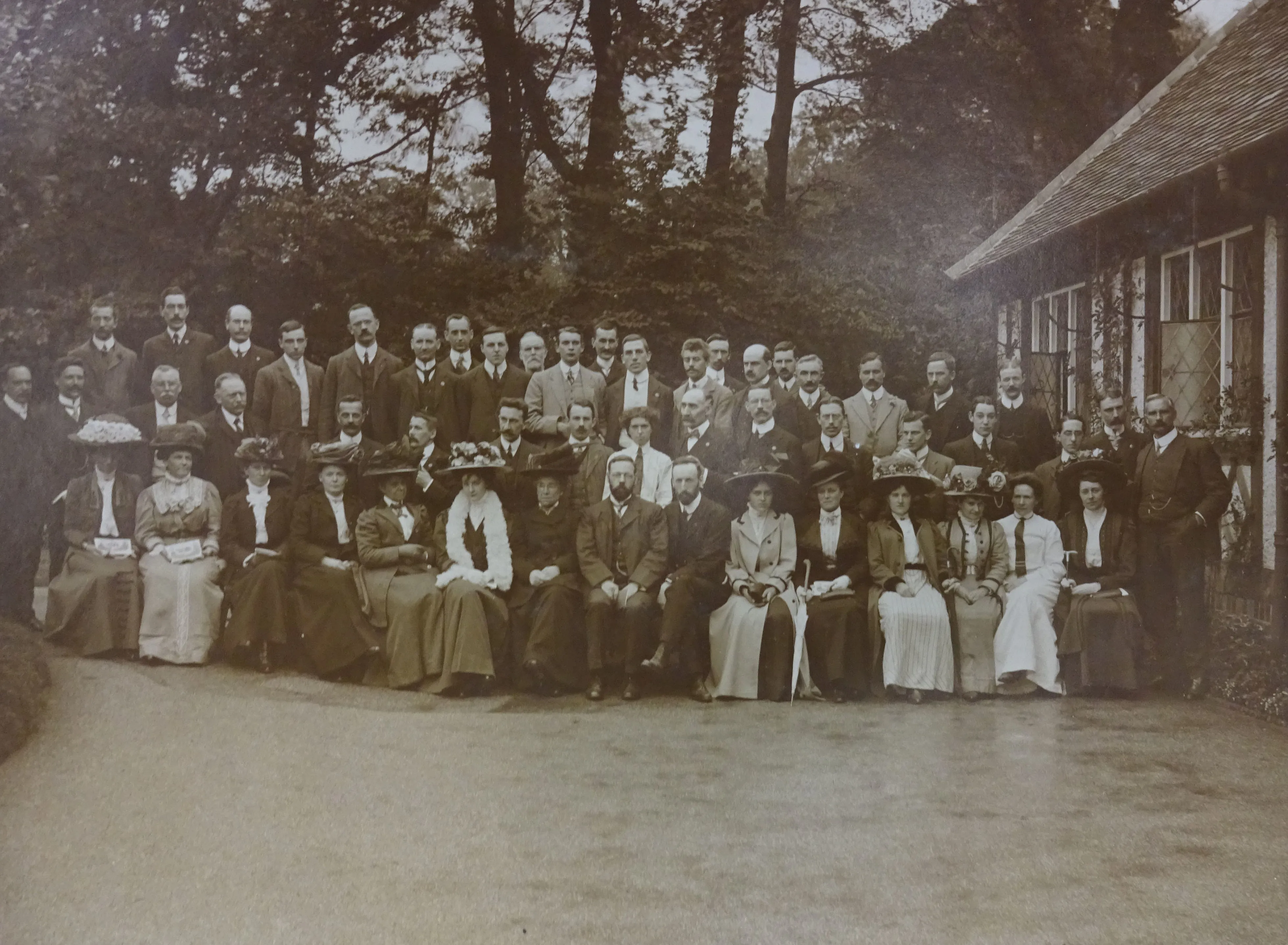
JIE visit to Cadbury’s Bourneville works, 1909 ref. IET images IIE/IMgTechE/SPE/03
Technician engineers
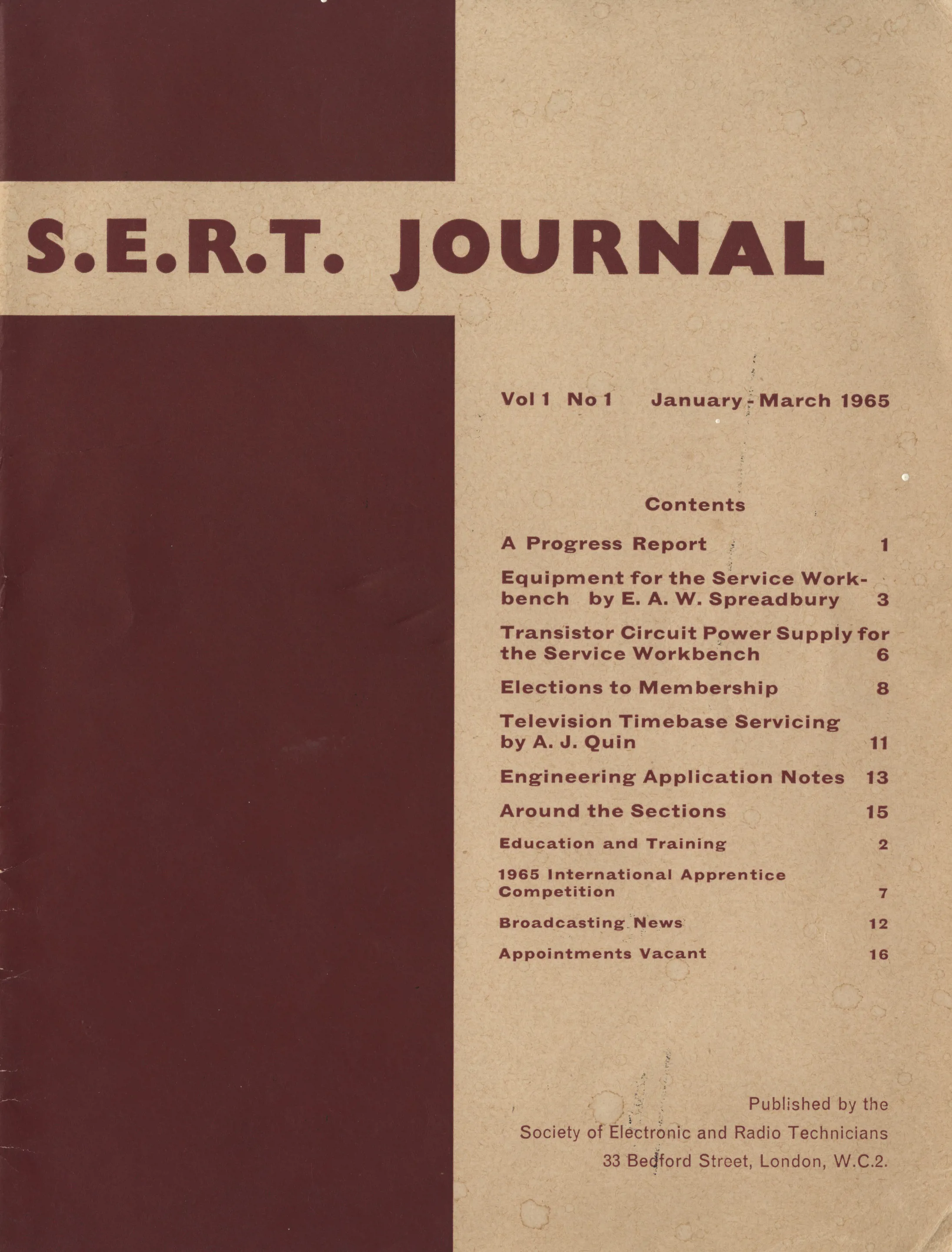
Cover of first SERT Journal 1965 ref. IET images IIE/IEEIE/SPE/01/01
The final group of engineering organisations that feature in the history of the IET were formed for technician engineers. By the 1960s, three categories of engineers were recognised in the UK: professional or Chartered engineers (CEng), Technician engineers (TEng) and Engineering Technicians (EngTech).
In 1988, the middle group of technician engineers was renamed Incorporated Engineers (IEng).
Many of the organisations that would become part of the Institution of Incorporated Engineers (IIE) were formed by and for technician engineers.
This included the Society of Electronic and Radio Technicians, founded with the support of the IERE in 1965, and the Institution of Electrical and Electronics Technician Engineers, founded with the support of the IEE in the same year.
The two organisations eventually merged with the Institution of Incorporated Engineers. This in turn merged with the IEE in 2006.
